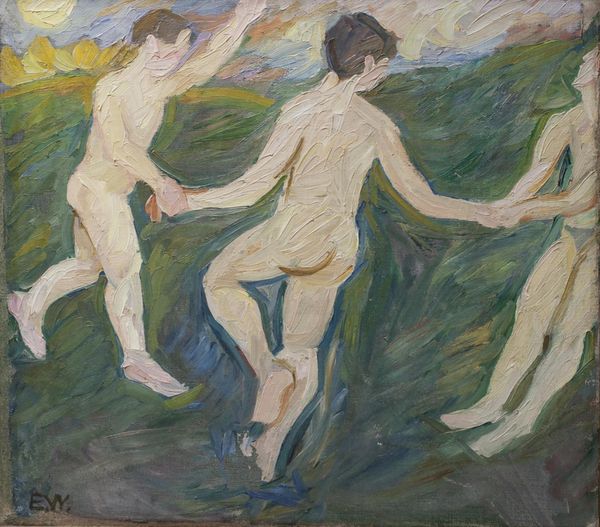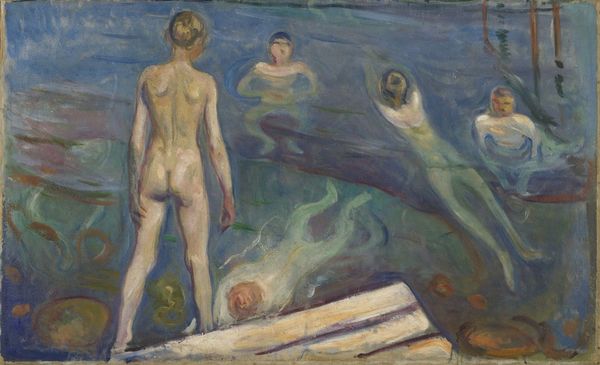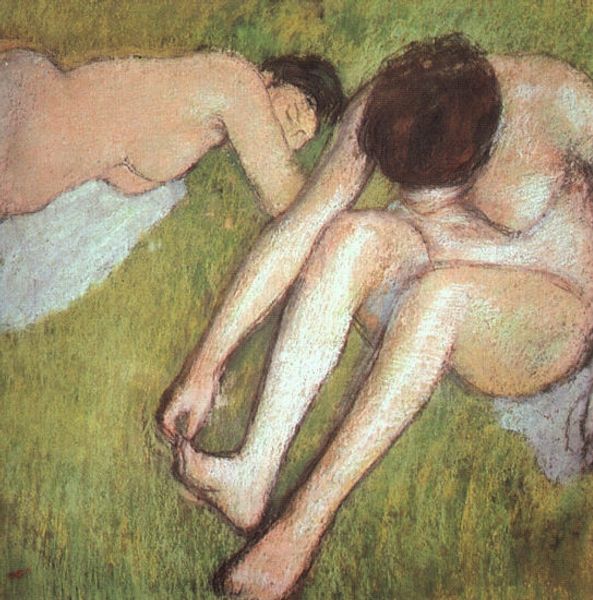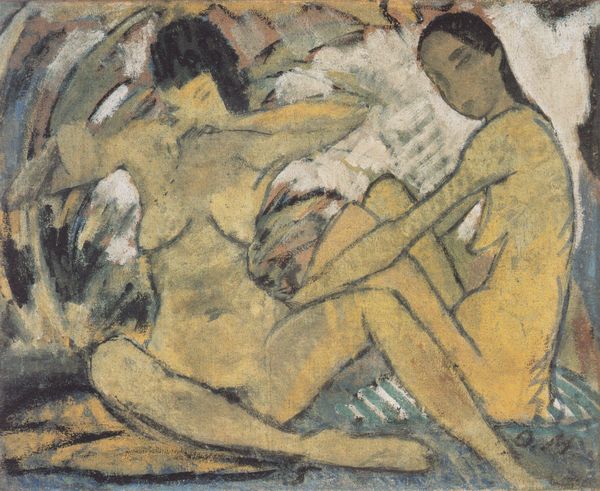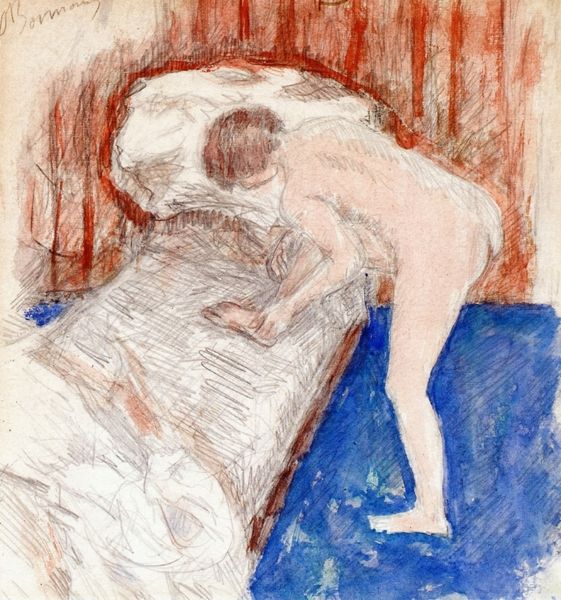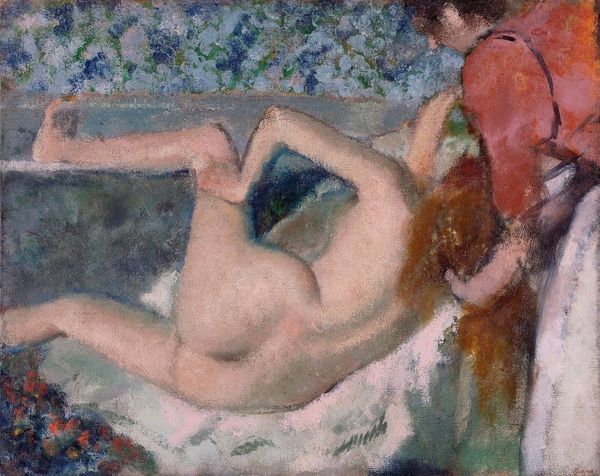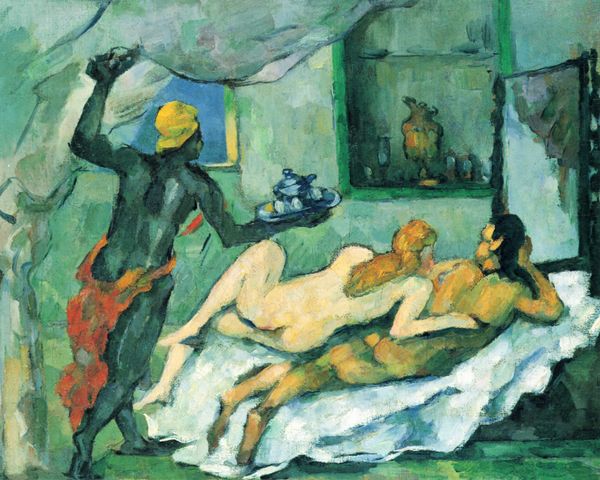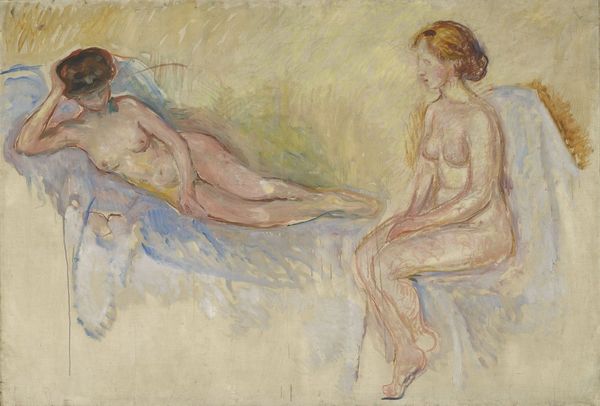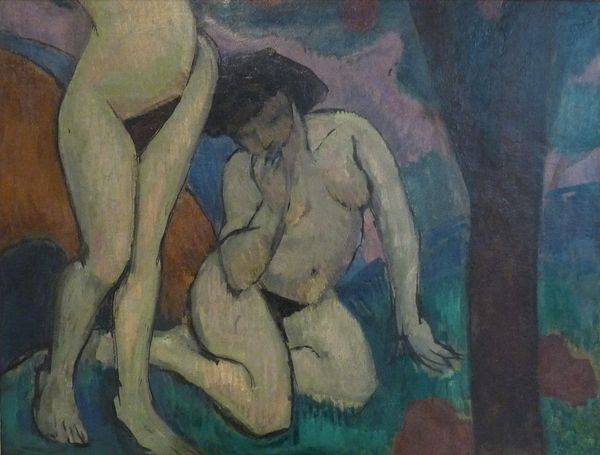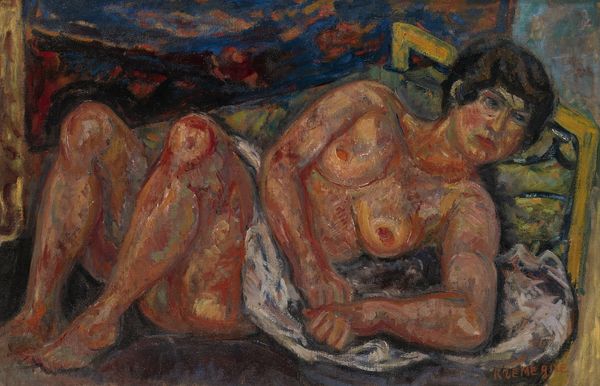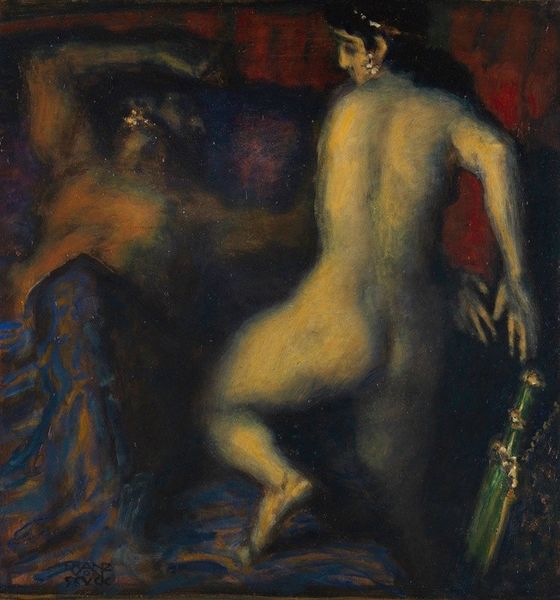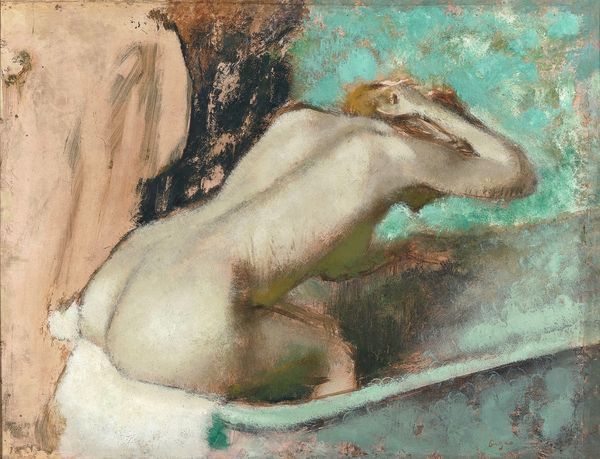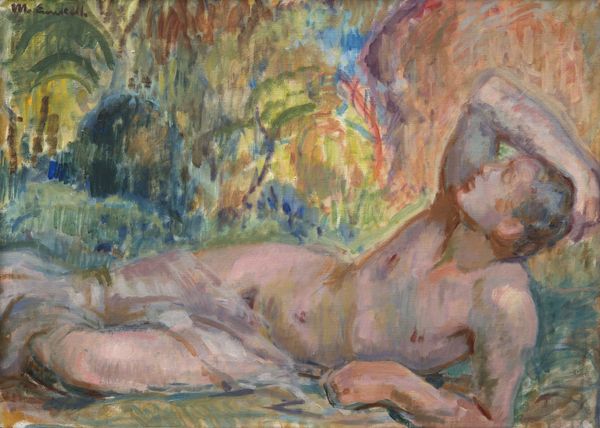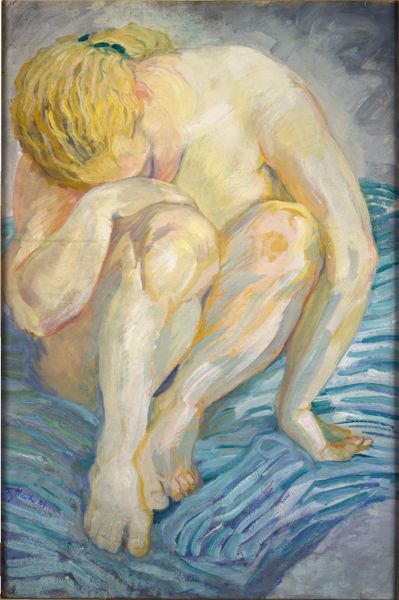
painting, oil-paint
#
figurative
#
painting
#
oil-paint
#
landscape
#
figuration
#
oil painting
#
expressionism
#
genre-painting
#
nude
Copyright: Public Domain: Artvee
Curator: Edvard Munch created this oil painting, titled "Bathing Women," between 1896 and 1897. The style is unmistakably Expressionistic. Editor: My immediate response is… unsettling. There’s a spectral quality to the figures and the palette is dominated by murky greens and blues. The composition, with that grid-like background, almost traps the figures. Curator: Munch often depicted scenes charged with psychological tension, and here the theme of bathing women, so common in art history, takes on a different symbolic weight. Water in Munch's visual vocabulary could represent both cleansing and danger. Considering the period’s social constraints and emerging ideas about female sexuality, are these women liberated or somehow trapped? Editor: The very structure emphasizes that feeling. The figures aren’t seamlessly integrated with the ground; that grid is oddly prominent. It dissects and flattens the picture plane and pushes the figures into the foreground, like specimens. And look at the treatment of the bodies. They’re barely modeled, almost rudimentary in their forms. Curator: The stark rendering serves a purpose, I think. There is one form off to the side, entirely rendered in green, seemingly detached, almost like a ghost of a figure. Munch, heavily influenced by Symbolism, might have meant for us to consider memory or the psychological remnants of lived experience through such artistic choices. How do the recurring anxieties of existence, the echo of social or existential experiences manifest visually? Editor: I see that detachment too, not just in the single, spectral figure, but even between the other two figures who stand side-by-side. And notice the restricted palette. Munch eschews any sort of naturalistic skin tone, preferring sickly yellows and pale blues. This intensifies the alienating mood. Curator: It’s as if the physical space around these women, made rigid by the oppressive green-toned grid, reflects a wider unease, possibly hinting at societal expectations of women during this time or internal psychological anxieties. The repetition of visual motifs underscores a continuity of feeling through imagery. Editor: This is a really stark commentary conveyed through the art's formal elements. This isn't just about depicting women bathing; it’s about a raw, almost visceral engagement with color, form, and texture to convey the anxieties and alienations of modern life. It definitely disrupts conventions about ideal beauty. Curator: Absolutely. Thank you for sharing your formalist insight into what, through time and its repeated iconography, holds so much more meaning. Editor: Thank you! Considering it formally and structurally only intensified the emotional impact.
Comments
No comments
Be the first to comment and join the conversation on the ultimate creative platform.
